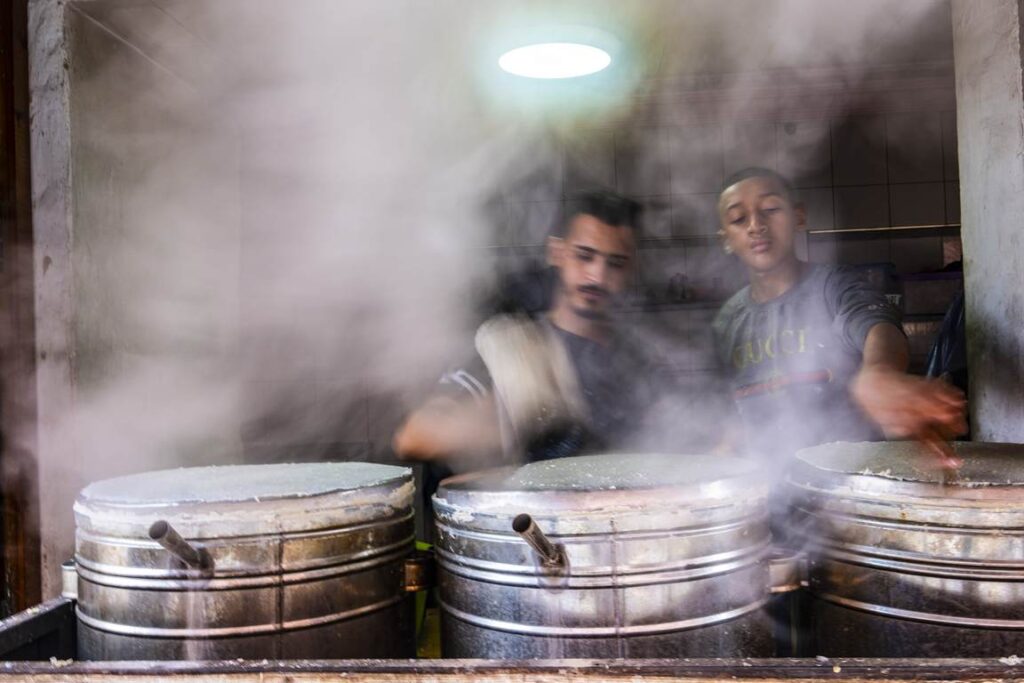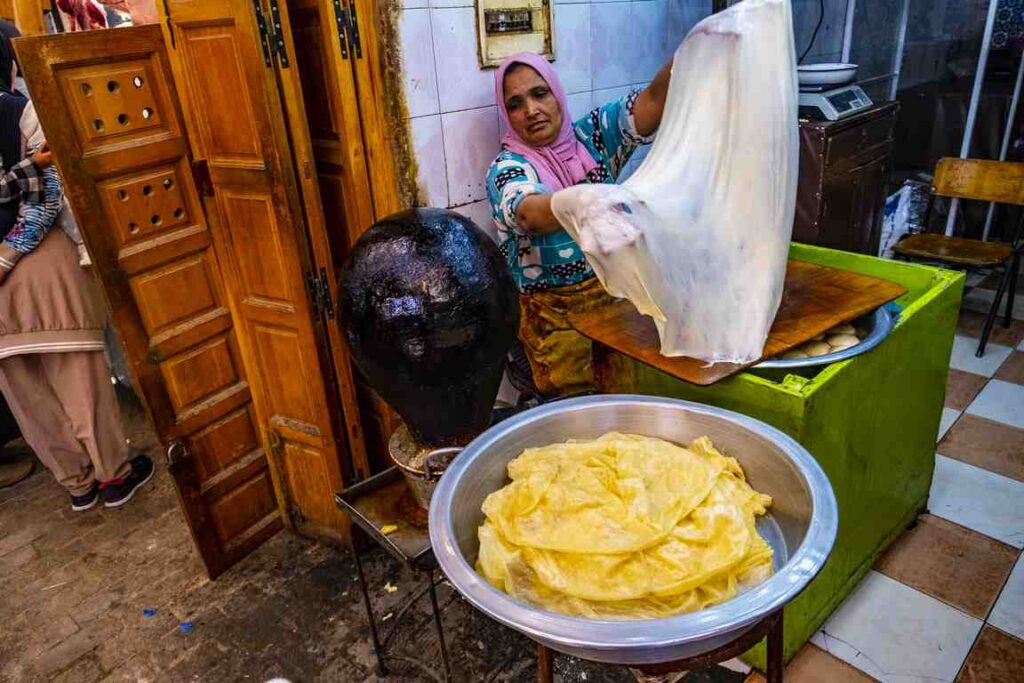Moroccan cuisine is renowned for its rich flavors, aromatic spices, and diverse influences from Berber, Arab, and Mediterranean culinary traditions. Here are some key elements and popular dishes in Moroccan cuisine:

Key Ingredients:
- Spices:
- Moroccan cuisine is known for its skillful use of spices. Common spices include cumin, coriander, cinnamon, ginger, paprika, saffron, and turmeric.
- Herbs:
- Fresh herbs, such as cilantro, parsley, and mint, are frequently used to add brightness and freshness to dishes.
- Olive Oil:
- Olive oil is a staple in Moroccan cooking and is used for sautéing, drizzling, and in various sauces.
- Preserved Lemons:
- Preserved lemons are a distinctive ingredient in Moroccan cuisine. They add a tangy and slightly fermented flavor to many dishes.
- Couscous:
- Couscous is a staple grain in Moroccan cuisine. It is often steamed and served as a base for stews or mixed with vegetables and spices.
- Tagine:
- A tagine refers to both a North African stew and the cone-shaped clay pot in which it is cooked. Tagines can contain meat (often lamb or chicken), vegetables, dried fruits, and an array of spices.
- Harira:
- Harira is a traditional Moroccan soup, particularly popular during Ramadan. It typically includes tomatoes, lentils, chickpeas, herbs, and sometimes meat.
- Bread:
- Moroccan bread, such as khobz or msemen, is a common accompaniment to meals. It is often used to scoop up sauces and stews.

Popular Moroccan Dishes:
- Couscous with Vegetables:
- A classic dish made with steamed couscous served with a variety of vegetables like carrots, zucchini, and chickpeas.
- Chicken Tagine with Preserved Lemons and Olives:
- A flavorful tagine featuring chicken, preserved lemons, olives, and a blend of aromatic spices.
- Lamb or Beef Tagine with Apricots and Almonds:
- A sweet and savory tagine with tender lamb or beef, dried apricots, almonds, and a blend of spices.
- Bastilla (Pastilla):
- A savory and sweet pie made with layers of thin pastry, pigeon or chicken, almonds, and spices. It’s often dusted with powdered sugar and cinnamon.
- Zaalouk:
- A salad made from cooked eggplants and tomatoes, seasoned with garlic, olive oil, and various spices.
- Mint Tea:
- Moroccan mint tea is a ubiquitous beverage, enjoyed throughout the day. It consists of green tea, fresh mint leaves, sugar, and sometimes other herbs.
- Mechoui:
- Spit-roasted lamb, often served during festive occasions.
- Maakouda:
- Fried potato cakes seasoned with spices, herbs, and sometimes meat.
Desserts:
- Pastries:
- Moroccan pastries are famous for their intricate designs and sweet fillings. Examples include baklava, chebakia, and gazelle horns.
- Dates and Almonds:
- Dates and almonds are commonly served as snacks or as part of desserts, symbolizing hospitality.
- Shebakia:
- Deep-fried, honey-soaked sesame cookies, often enjoyed during Ramadan.
Moroccan cuisine reflects the country’s diverse cultural history, and meals are often a communal affair, emphasizing the importance of sharing and hospitality. The combination of spices, herbs, and unique cooking techniques contributes to the distinct and delicious flavors of Moroccan dishes.
